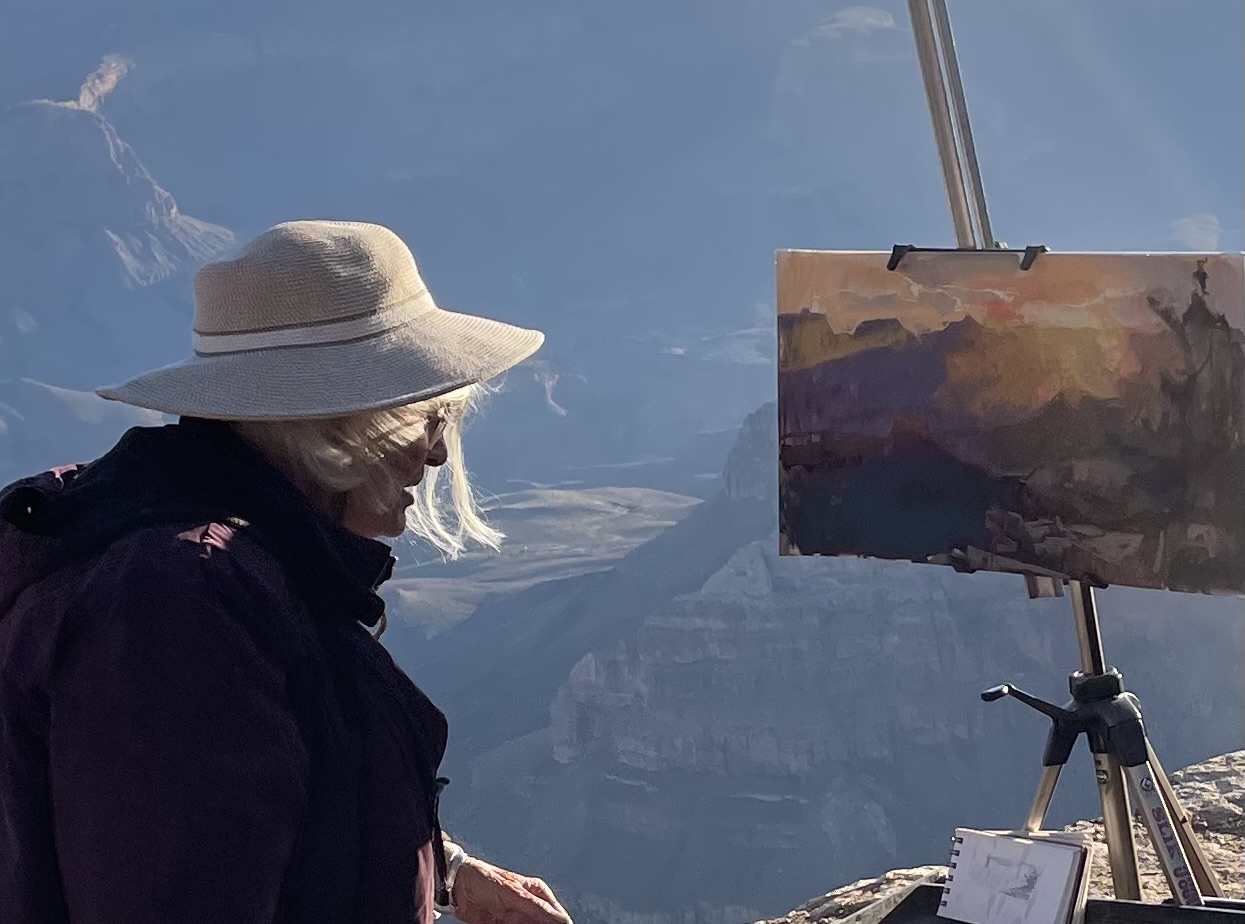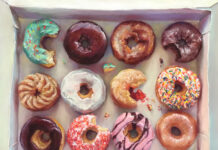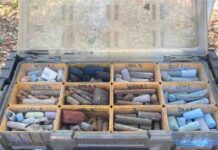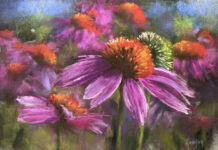
For the scene (below) at the Torrey Pines State Natural Reserve, plein air painter Margaret Larlham said, “My attention was drawn to the subtle value shifts of nearby and distant canyons against the morning light and the silhouetted lane of trees intersecting the foreground and background.”
PASTEL TUTORIAL

Step 1
To start, she made a notan sketch to plan the composition. “I carry an ink pen and notebook everywhere, I go” says the artist. “I stand somewhere and get that out of the way before I even set up. If I feel there’s something there, then I will go on and paint.”

Step 2
Here you can see Larlham’s large setup, featuring pastels from several manufacturers. She also has an extremely lightweight, homemade setup constructed out of foam core, with much fewer pastels.

Step 3
To establish the overall design of the piece, with an eye toward color temperature, the artist lightly scumbles pastel in a very simple way.

Step 4
Next, she dips a brush in isopropyl alcohol and pushes the pigment into the sanded pastel paper to create an underpainting. “I’m using the brush to explore hints of energy in the dynamic formation lines of the landscape,” she says.

Step 5
Larlham then embarked on the drawing phase of the painting, settling down to explore the focal point and expressing the shadow areas with a dark pigment. She usually uses vine charcoal for this stage, but having misplaced it, she happily picked up a reddish brown pastel stick.

Step 6
To balance the warmth of the reddish brown, Larlham countered it with dark, medium, and light versions of blue-green. “You use the materials you have,” she says. “I could have viewed the reddish brown pastel as a mistake, but I accepted it and saw that there was an advantage to working in this way.”

Step 7
“As the sun rose higher, the foliage and foreground became more animated,” Larlham says. “I used the same pale yellow that I used in the sky to lighten the distant diagonal road. I added glimpses of orange earth in the foreground, and added a yellow-green edge to the trees and darker shades to suggest the play of light on the thick vegetation in the canyon below. I liked the backlit areas and exaggerated the effect of the back light hitting the trees in the foreground.”

Final Step
Stepping back to assess her work, Larlham looked to ensure there was nothing glaring or obviously incorrect in the piece, and ultimately declared the sketch a success. “You will just have to wait with baited breath for the completed painting someday,” she says, with a chuckle.

Get a front row seat to demos by some of today’s top pastel artists at the next Pastel Live!



